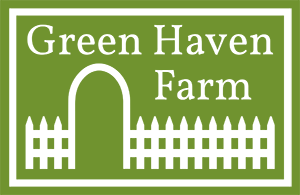Reading Seed Packs
Lots of lovely seeds!
I think seeds are amazing. One of my favorite things about late winter is choosing and starting seeds. There are so many more options for plants and its so much cheaper than purchasing grown plants. If you are interested in jumping on the seed starting bandwagon – here are just a few things to check out on your seed packets.
All seed packets should have the year the seeds were packed for printed on the packet. If you are purchasing seeds new make sure they are for the current year. Although, many seeds will last longer than a year and sometimes extra seeds can be saved to use next season if you store your seeds properly. You can find an article here to learn how to properly store seeds and how long they remain viable.
General Description
The general description will tell you all the plants attributes (sometimes in quite flowery language – pun intended). This is the place where you can compare one variety to another.
For ornamental plants, consider the location you want to plant. The growing conditions in terms of the amount of sun and soil conditions should be specified on the seed packet and can be matched to the conditions in your garden. Things like size, color, bloom time, and fragrance can help with selection. Sometimes certain cultivars of the plant are better suited for a particular location (for example sun vs. shade Coleus) so reviewing several cultivars of the plant you want can be helpful. Packets usually note if the plant is annual, biennial or perennial.
Plant description and days till maturity
Vegetables and fruits often include information on disease resistance, plant growth habit (i.e. bush vs. climbing), a description of the produce size and flavor, and any limitations like heat tolerance. Another key bit of information is “days to maturity”. This is an indication of when you can expect to start harvesting after you either transplant a seedling into the garden or after the seed germinates if you directly seeded into your garden. Knowing this will help plan for harvests and for succession planting if you want a second harvest later. Days to maturity is sometimes found on the front of the seed pack.
Growing Instructions
These seeds require light to germinate and should not be covered with soil
Its important to review the growing instructions. They provide information on whether the seeds can be started indoors or not and when to do so. The timing for starting seeds is listed in terms of weeks before last spring frost. (You can check out the last frost date for your location here).
The packet will indicate how deep and how close together to sow the seeds and how long the seed will take to germinate, as well as the seed germination temperature range.
These seeds need darkness to germinate, but they are small. So darkness is ensured by covering the planting flat rather than risk burying the seeds to deeply.
Packets may also indicate special growing conditions. Some seeds may need to be pre-treated or soaked before sowing. Some seeds require light in order to germinate and must be surface sowed and left uncovered. Others require complete darkness and must be covered to exclude light.
Finally, pay attention to spacing and thinning recommendations. It can be very hard to discard some of the seedlings after putting so much effort into growing them. But the crowded conditions will just make all of the seedlings weak and leggy.
If you are growing indoors and end up with multiple seedlings in the same growing cell, it is sometimes easier to cut the weakest seedlings off at the soil with scissors rather than pulling them out and risk disturbing the seedling you want to keep. This method can also be used to thin seedlings outdoors.
Some of these seedlings need to be removed so the remaining ones will thrive.





